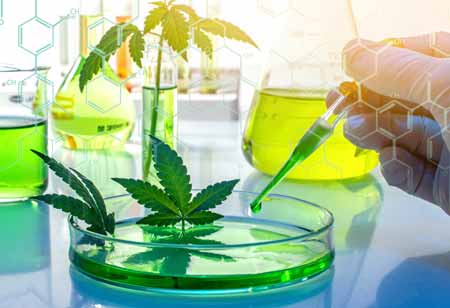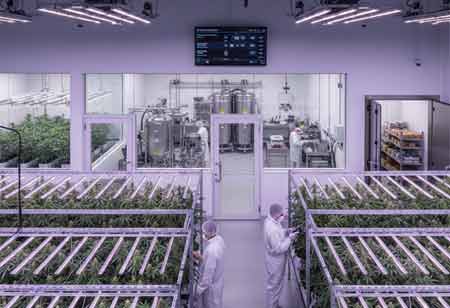Thank you for Subscribing to Cannabis Business Insights Weekly Brief
What You Need to Know About Cannabis Potency Testing
Cannabinoid content analysis (potency analysis) can be performed at a commercial scale by cannabis and hemp testing laboratories using three primary testing technologies

By
Cannabis Business Insights | Thursday, May 18, 2023
Stay ahead of the industry with exclusive feature stories on the top companies, expert insights and the latest news delivered straight to your inbox. Subscribe today.
FT-IR uses infrared energy to transmit information through refined samples, such as oils or concentrates. The "picture" provided by FT-IR in the analysis is composed of all molecules in a sample since FT-IR is not used with chromatography
FREMONT, CA: Cannabinoid content analysis (potency analysis) can be performed at a commercial scale by cannabis and hemp testing laboratories using three primary testing technologies: HPLC, LC/MS, and Fourier transform infrared spectroscopy (FT-IR). These technologies are each suitable for a specific use case and have merits. Let's examine each one in turn.
HPLC
Commercial cannabis and hemp laboratories commonly use HPLC systems with ultraviolet detectors to test potency. In HPLC, separation occurs by distributing the analyte (sample) between the stationary phase (packing material of the column) and the mobile phase (eluent). A molecule passing through the stationary phase is delayed depending on its chemical structure. An individual sample's time "on-column" is determined by particular intermolecular interactions with its packing material. The elution of different components of a sample is therefore based on the time it takes to dissolve them. Thus, samples are separated according to their ingredients
The term chromatography simply refers to a process of separation. In chromatography, cannabinoids are separated from mixtures. In order to determine the level of each cannabinoid, UV light is shined on the separated compounds. Depending on the concentration of a cannabinoid, it absorbs UV light differently. This can be determined by measuring how much UV light is absorbed by each cannabinoid within the sample.
HPLC is perfect for starting up, producing, and expanding commercial laboratories. Using such testing equipment, labs can analyze cannabis, hemp, or cannabis-derived cannabinoids derived from oils or concentrates at high throughputs. HPLCs are compact laboratory instruments with footprints of as little as two sq. ft. Within five to twenty minutes; this technique can identify cannabinoids reproducibly.
LC/MS
LC/MS is used to determine the potency of cannabis and hemp in scenarios where identification is critical. As a result of mass spectrometry, a sample can be accurately separated and measured based on its mass, providing an additional level of confidence and delivering results. Due to the mass-based identification of molecules, LC/MS is a highly selective method that provides quantitative results.
In LC/MS, the HPLC (high-performance liquid chromatography system) is identical to the HPLC described above, but instead of working with a non-selective UV detector, the detector is a mass spectrometer. In MS, molecular ions are weighed and identified using a highly sensitive and selective scale. UV is less sensitive than MS and can mitigate chemical interferences.
There is no other commercially available testing methodology as sensitive or selective as LC/MS. As a result, cannabis and hemp testing labs are able to detect unique molecular features in samples in complex matrices. It is, therefore, well suited for forensics, criminalistics, and research, as well as regulatory potency testing.
FT-IR
Cannabinoids in a sample can be assessed quantitatively and semi quantitatively using FT-IR analysis. It is portable for both laboratory and field use due to its small form factor.
FT-IR uses infrared energy to transmit information through refined samples, such as oils or concentrates. The "picture" provided by FT-IR in the analysis is composed of all molecules in a sample since FT-IR is not used with chromatography. In order to determine the amounts of each cannabinoid in a sample, a calibration and identification model must be constructed.
An FT-IR analysis can be performed on a powder or a liquid sample that is a 'clean matrix.' A lab can identify the cannabinoid content that includes THC, among the four major cannabinoids, with little or no preparation of a sample. It is relatively inexpensive to set up and has a portable form factor. An interferometer is the infrared "source" in FTIR, which is why it allows for greater speed, and the Fourier transform is responsible for these benefits. In mathematics, Fourier transforms are mathematical functions that separate waves according to time and return their frequency. Infrared spectroscopy is based on a graph called an interferogram, which is converted into an infrared spectrum graph using the Fourier transform.






